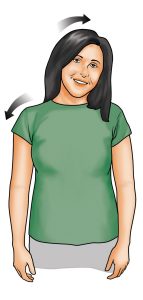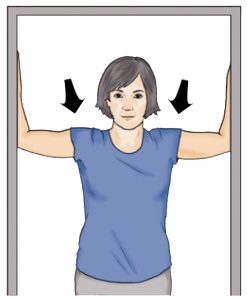“Text Neck”: A True 21st-Century Ailment, or Just Another Pain in the Neck?
Yes, text neck is here—a medical problem for people who spend too much time looking down at smartphones. Somewhere out there, we're sure this text went out: "OMG, my BF has TN! It hurts 24/7. Do not LOL!"
So this is where we’ve gotten ourselves. Right up there with tennis elbow, swimmer’s shoulder, and jumper’s knee is “text neck,” an increasingly common orthopaedic ailment in this digital world of messaging, viewing, scrolling, and gaming on our cell phones. It’s a pain in the neck that’s sending millions to their MDs, osteopaths, chiropractors, and massage therapists.
The average adult in the U.S. spends two hours and 51 minutes a day on a smartphone—an hour more than he or she did four years ago. And isn’t likely to level off: A report issued by Common Sense Media found that 50 percent of teens feel addicted to mobile devices.
What Causes Text Neck?
A Florida chiropractor, Dr. Dean Fishman, coined the term “text neck” several years ago. Based on physical exams and x-rays of his patients, he theorized that people who spend prolonged periods of time with their heads down to view mobile devices are creating excessive strain on the cervical (upper) area of the spine.

Constantly looking down at a cellphone—or any device–will cause pain in the cervical vertebrae.
Dr. Fishman also said that tilting the head forward, together with gravity, increases the load that has to be supported by the neck and spine. And the more you tilt your head forward, the heavier the load—up to 60 pounds at a 60-degree tilt.
That claim has been disputed by other experts, who say that our necks are made to bend forward; the position isn’t something that’s new to humans. Texting, after all, involves the same type of posture as when we read a book. This argument suggests that the problem is not the position of the head—it’s the amount of time spent in a head-down posture.
Aside from scientific disagreements, how text neck develops has a common-sense explanation. Holding your head in any non-neutral position—up, down, or to the side—for several hours a day is likely to cause pain. If not classic text neck, it’s classic muscle overuse.
What Are the Symptoms of Text Neck?
What everyone does seem to agree on is the type of the symptoms associated with text neck. These pains are real, and they may involve any combination of:
- Neck pain
- Stiff neck
- Upper back pain
- Pain that radiates into the shoulders and arms
- Headache
The risk extends to people besides those who can’t resist the urge to look down at their mobile devices. Any person who sits or stands and looks down most of the day is at higher risk. Dentists, surgeons, and welders come to mind.
How to Reduce the Risk of Text Neck
Like most other orthopaedic conditions, the first step in resolving the problem is to quit doing whatever is causing the pain. Try making these part of your routine:
- Keep your head up and in a neutral position when using your smartphone.
- Take frequent breaks.
- Avoid prolonged static postures of any kind, including staring down at your phone.
- Perform stretching and strengthening exercises.
- And (here’s the hard one) avoid excessive use of mobile devices.
Digital Help for Text Neck
Dr. Fishman not only invented the term “text neck,” but he established the Text Neck Institute to conduct research and treat text neck patients. He also created a mobile app called “The Text Neck Indicator” that alerts users when they are in an at-risk/head-forward position.

You can do Head Tilt exercises almost anytime or anywhere.
Anti-Text Neck Exercises
Below are three easy at-home and at-work exercises to help you win the battle against the dreaded text neck. For more stretching exercises, see UCLA’s Stay Fit Series: Easy Exercises for Flexibility.
“Head Tilt”
- Slowly tilt your head toward your left shoulder as far as comfortably possible.
- Hold for 10 to 30 seconds.
- Repeat to the opposite side.
- Do 3 to 5 reps, 2 sets.
“Head Back”
- Relax your shoulders.
- Slowly roll your head back and hold for 3 to 5 seconds.
- Relax and return to the starting position.
- Repeat at least 5 times.

Shoulder Doorway Stretches will help keep the muscles in your neck and shoulder loose and limber.
“Shoulder Doorway Stretch”
- Stand in front of an open doorway, feet staggered, arms raised, upper arms parallel to the floor.
- Place your palms against the sides of the doorframe and lean forward.
- Hold for 20 to 30 seconds and relax.
- Do 2 to 3 reps, 1 to 3 sets.
Sources & Resource
For further information on stretching exercises, upper back pain, and back pain treatment, please visit the following posts:
- How to Become Flexible: Easy Exercises to Keep You Limber and Independent
- What’s Causing Your Upper Back Pain?
- Ice or Heat? For Back Pain, It Depends?
Illustrations: Alayna Paquette


 Vestibular Migraine Diet
Vestibular Migraine Diet  Bone Spurs on the Spine
Bone Spurs on the Spine  Knee Injections for Osteoarthritis Pain Relief
Knee Injections for Osteoarthritis Pain Relief 
Heads up! So-called "text neck"—pain in your neck, spine, and/or shoulders—can develop from hours of doing this (or of holding any position, for that matter).
© Mimagephotography | Dreamstime.com